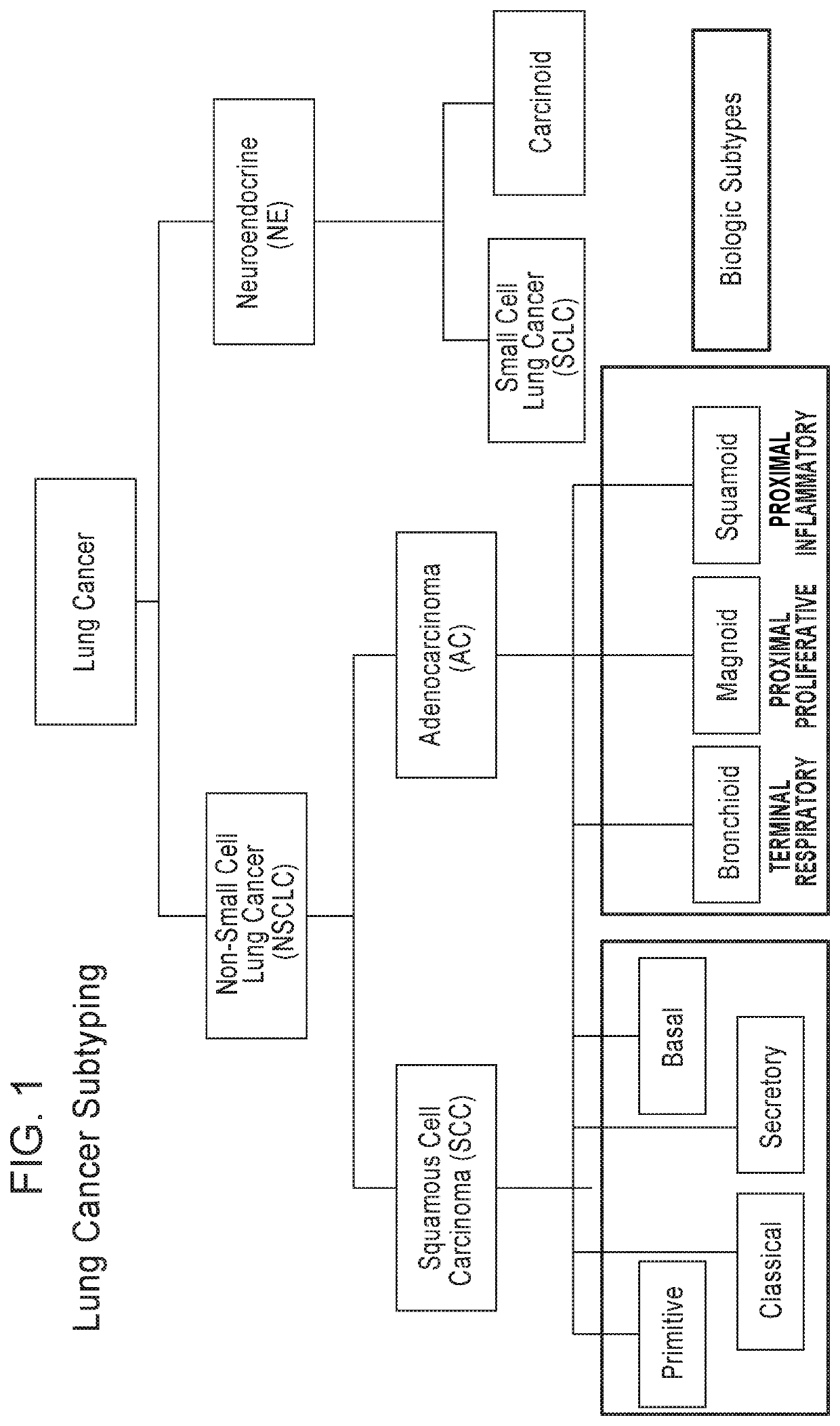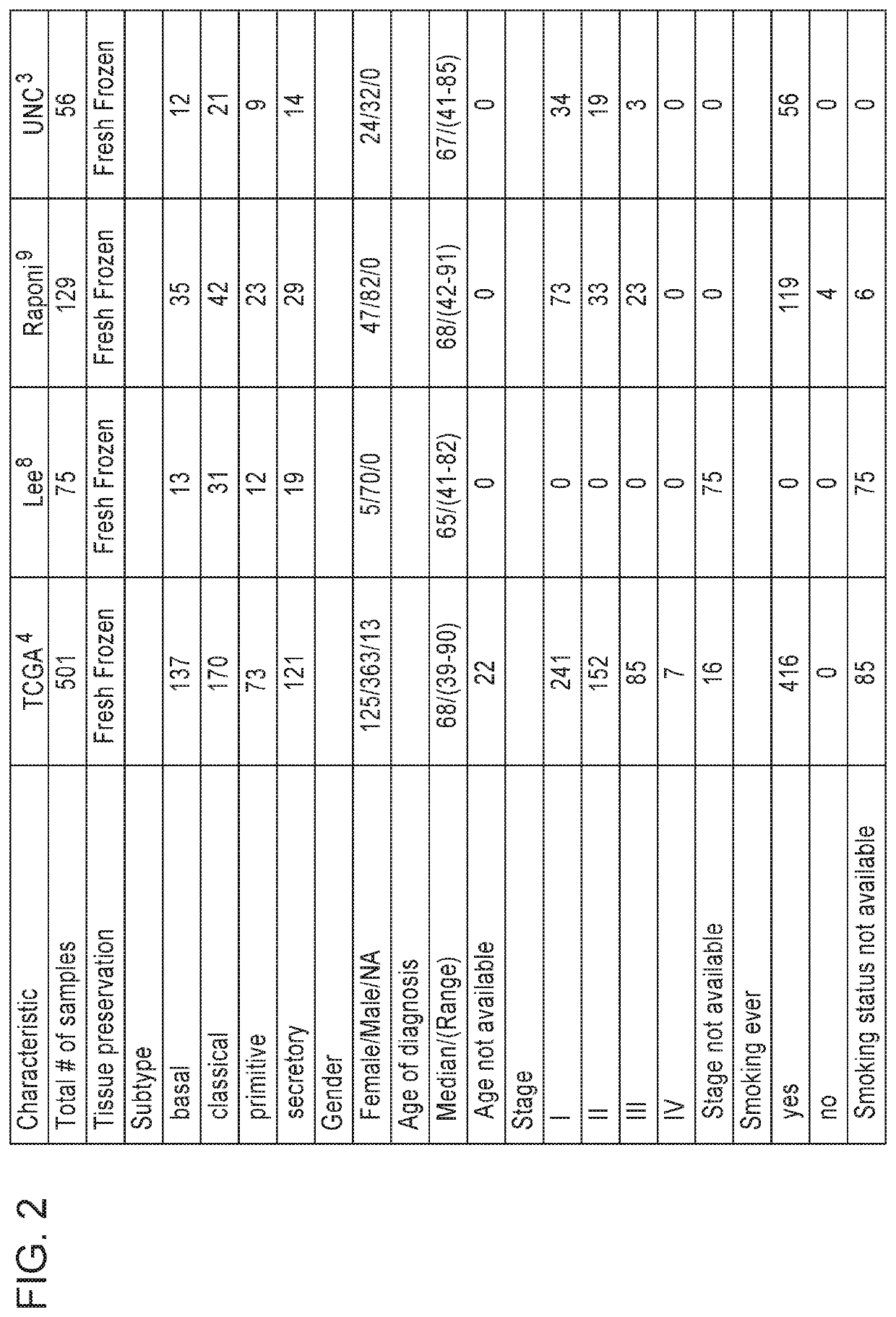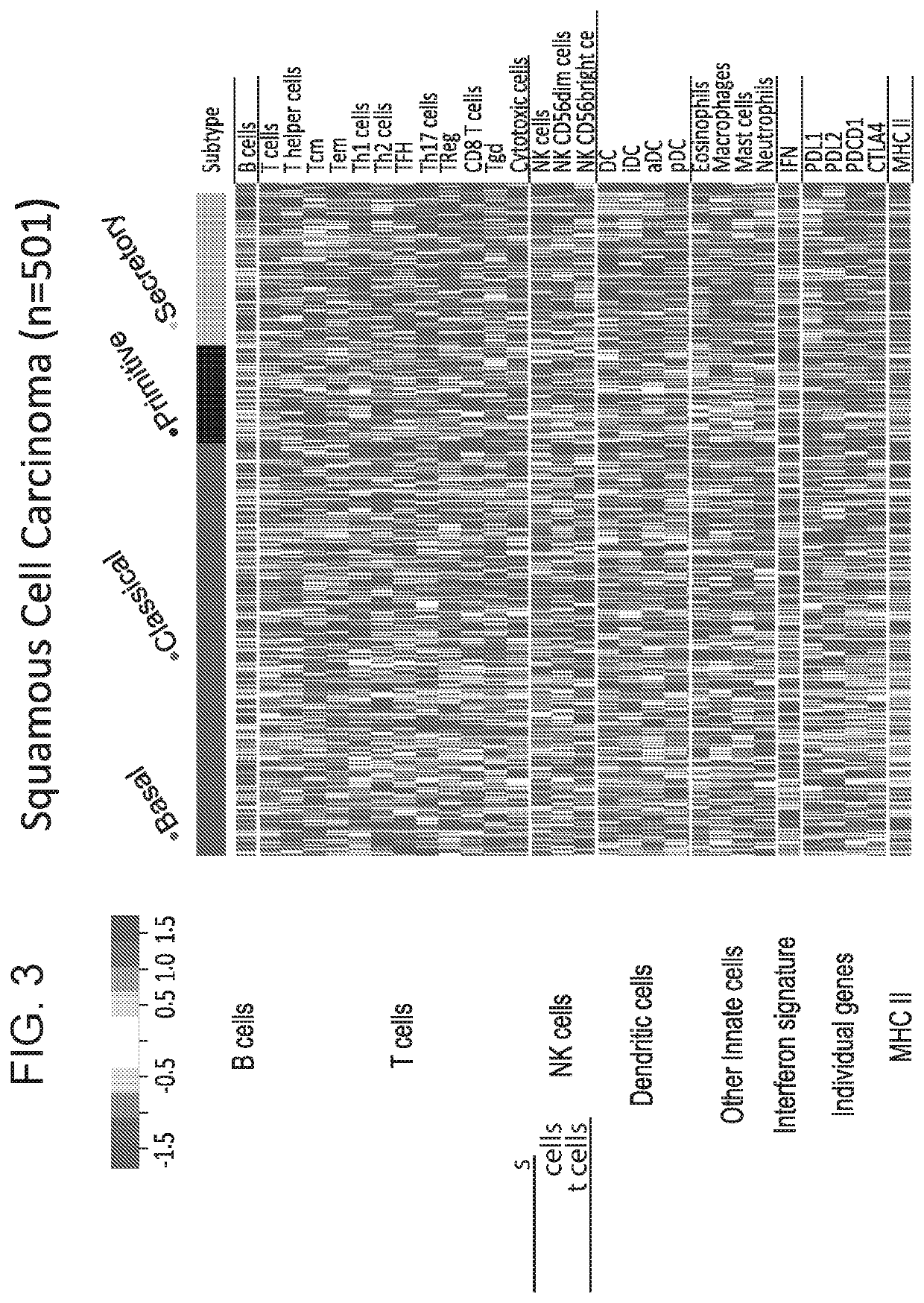Methods for subtyping of lung squamous cell carcinoma
a subtype technology, applied in the field of lung squamous cell carcinoma subtypes, can solve the problems of changing outcome, false positive, and presenting a significant threat to patients with postoperative 5-year survival rates
- Summary
- Abstract
- Description
- Claims
- Application Information
AI Technical Summary
Benefits of technology
Problems solved by technology
Method used
Image
Examples
example 1
ll Activation Differences Among Lung Squamous Cell Carcinoma Intrinsic Subtypes and Variable Correlation with CD274 (PD-L1) Expression
Introduction
[0184]Gene expression based subtyping in Lung Squamous Cell Carcinoma (SQ) classifies SQ tumors into distinct subtypes with variable biologic and clinical features. Gene expression based subtyping has consistently identified 4 subtypes with Lung SQ, Primitive, Classical, Basal and Secretory (1, 2) (see FIG. 1). SQ subtypes demonstrate key differences in genomic alterations, tumor drivers, prognosis, and likely response to various therapies (1-2).
Methods
[0185]Using previously published Bindea et al. (3) immune cell gene signatures (24 in total) and SQ subtyping gene expression signatures (1-2), several publically available lung SQ datasets (1-2 and 4-5) (see FIG. 2) were examined for immune cell features in relation to SQ subtypes. This investigation of immune differences by subtype used the 24 immune cell gene signatures from Bindea et al ...
example 2
Development and Validation of the Lung Squamous Cell Carcinoma Subtyping Signature
Objective
[0211]Lung squamous cell carcinoma (SQ) subtyping has been primarily restricted to a research protocol involving the extraction of RNA from Fresh Frozen lung tumors, followed by application of a nearest centroid predictor using quantitative gene expression of over 200 genes. Despite evidence of prognostic and predictive benefits from squamous cell carcinoma subtyping, the need for Fresh Frozen tissue, the requirement for gene expression of >200 genes in combination with complex bioinformatic analyses, has hindered the application of SQ subtyping in drug development and / or the clinic. The goal of this study was to develop a robust and efficient gene signature (with fewer genes needed) for differentiating the four subtypes of squamous cell carcinoma (i.e., basal, classical, secretory or primitive subtypes). The new efficient gene signature may serve to reliably subtype SQ from fresh frozen or FF...
example 3
ll Activation Differences Among Lung Squamous Cell Carcinoma Intrinsic Subtypes as Determined Using Lung Sqaumous Cell Carcinoma Subtyping 80 Gene Signature from Example 2
Methods
[0226]Using previously published Bindea et al. (1) immune cell gene signatures (24 in total) and the Lung SQ subtyping gene signature described in Example 2 for subtyping SQ, several publically available lung SQ datasets (2-5; see FIG. 2), were examined for immune cell features in relation to SQ subtypes. Gene expression signatures of both Innate Immune Cells (IIC) and Adaptive Immune Cells (AIC), a 13 gene IFN signature (IFN), as well as single gene immune biomarkers (CTLA4, PDCD1, and CD274 (PD-L1), PDCDLG2 (PD-L2)) were examined in the 4 SQ subtypes (basal, classical, primitive and secretory). Immune cell signature associations with tumor subtype and with CD274 expression were evaluated using linear regression. Hierarchical clustering of immune signatures and pairwise signature correlations were also anal...
PUM
| Property | Measurement | Unit |
|---|---|---|
| nucleic acid expression | aaaaa | aaaaa |
| quantitative real time reverse transcriptase polymerase chain reaction | aaaaa | aaaaa |
| Northern blotting | aaaaa | aaaaa |
Abstract
Description
Claims
Application Information
 Login to View More
Login to View More - R&D
- Intellectual Property
- Life Sciences
- Materials
- Tech Scout
- Unparalleled Data Quality
- Higher Quality Content
- 60% Fewer Hallucinations
Browse by: Latest US Patents, China's latest patents, Technical Efficacy Thesaurus, Application Domain, Technology Topic, Popular Technical Reports.
© 2025 PatSnap. All rights reserved.Legal|Privacy policy|Modern Slavery Act Transparency Statement|Sitemap|About US| Contact US: help@patsnap.com



